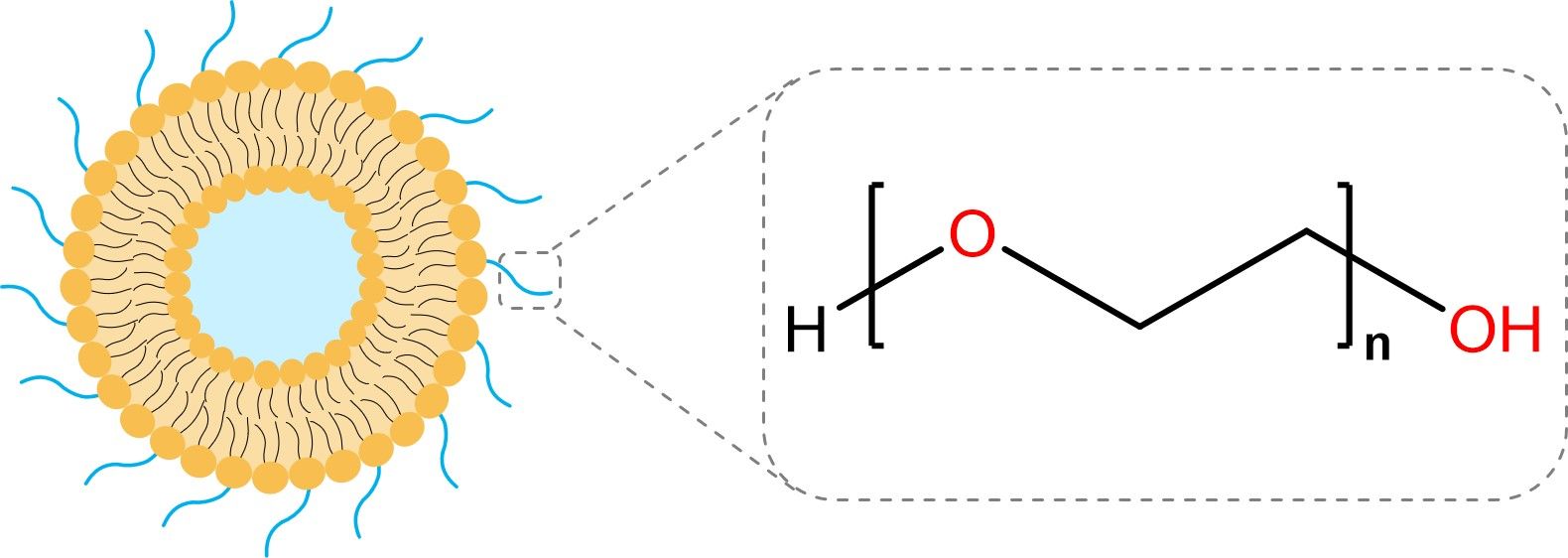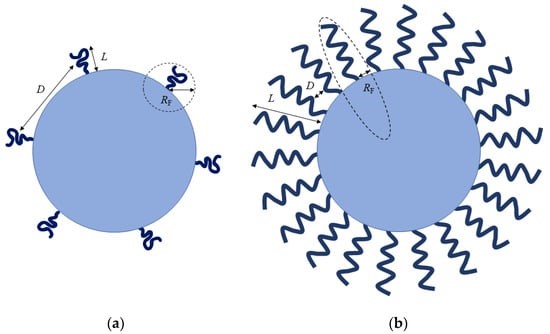PEG
Introduction Advantages Impact Factors
PEG is currently the most commonly used polymer for liposome modification. Creative Biolabs offers PEGylated liposome development services designed to provide our clients with high-quality, efficient solutions to meet their diverse needs in drug delivery and biomedical applications.
Introduction of PEGylated Liposomes
Polyethylene glycol (PEG), derived from the polymerization of ethylene oxide, is a water-soluble polymer that is favored in drug delivery systems due to its non-toxic profile, minimal immunogenicity, and superior biocompatibility. PEGylation of liposomes involves surface modification with PEG, which forms a hydrophilic protective layer. The PEG layer not only enhances the hydrophilicity of the liposomal surface but also prevents interactions between the liposomes and/or with proteins through steric hindrance. This modification reduces the affinity for the mononuclear phagocyte system (MPS), allowing these liposomes to evade recognition and uptake. Therefore, PEGylated liposomes are also known as stealth liposomes or long-circulating liposomes.
 Fig.1 Schematic diagram of PEGylated liposomes.
Fig.1 Schematic diagram of PEGylated liposomes.
Advantages of PEGylated Liposomes
-
Enhanced liposome stability: PEGylation reduces liposome aggregation, thereby increasing stability.
-
Extended circulation time: PEG provides a protective shield to liposomes, preventing recognition and uptake by the MPS.
-
Tumor targeting: PEGylated liposomes achieve passive targeting of tumors through the enhanced permeability and retention (EPR) effect.
Factors Influencing the Properties of PEGylated Liposomes
-
Molecular Weight (MW) of PEG
To avoid interactions with serum proteins and MPS cells, the PEG layer must be thick enough to shield the liposome surface. The length of PEG chains is directly related to the molecular weight of PEG. Higher molecular weight PEGylated liposomes generally have longer circulation times. However, increasing the molecular weight of PEG will also increase the particle size of liposomes to some extent, so it is important to choose the appropriate PEG according to project requirements.
The surface density of PEG is a pivotal factor that affects the PEGylation efficiency of liposomes, subsequently influencing the interaction between liposomes and protein. Generally, a high surface density of PEG can compensate for the reduced molecular weight of PEG by preventing protein adsorption on the liposome surface. However, it is important to note that increasing the PEG density enhances steric hindrance, which may affect the uptake of liposomes by target cells. Utilizing a cleavable PEG-lipid allows the PEG chains to detach from the liposome surface upon reaching the target cells, reducing steric hindrance and thereby facilitating liposome uptake by the cells.
PEG grafted onto liposomes can adopt "mushroom" or "brush" conformations, which dictate the efficacy of surface shielding. This is related to the Flory radius (RF) of the PEG, the average distance (D) between adjacent PEG chains, or the thickness (L) of the PEG layer. Typically, at low surface coverage, PEG chains have a greater range of motion, with D > RF and L = RF, hence the PEG chains exhibit a "mushroom" conformation. In contrast, at high surface coverage, the motion range of PEG chains is restricted, with D < RF and L > RF, resulting in a "brush" conformation.
 Fig.2 Schematic diagram of PEG conformation on liposomes.1, 2
Fig.2 Schematic diagram of PEG conformation on liposomes.1, 2
As an industry-leading supplier, Creative Biolabs specializes in the development and application of lipid-based delivery systems. If you would like more information about our services related to PEGylated liposome development, don't hesitate to contact us. We are excited about the possibility of working together to further your project!
References
-
Fam, See Yee, et al. "Stealth coating of nanoparticles in drug-delivery systems." Nanomaterials 10.4 (2020): 787.
-
Distributed under Open Access license CC BY 4.0, without modification.

For Research Use Only. Not For Clinical Use

 Fig.1 Schematic diagram of PEGylated liposomes.
Fig.1 Schematic diagram of PEGylated liposomes.
 Fig.2 Schematic diagram of PEG conformation on liposomes.1, 2
Fig.2 Schematic diagram of PEG conformation on liposomes.1, 2
 For Research Use Only. Not For Clinical Use
For Research Use Only. Not For Clinical Use
